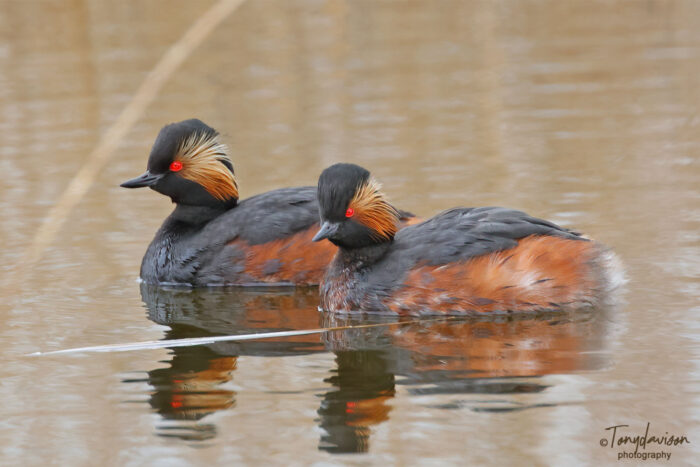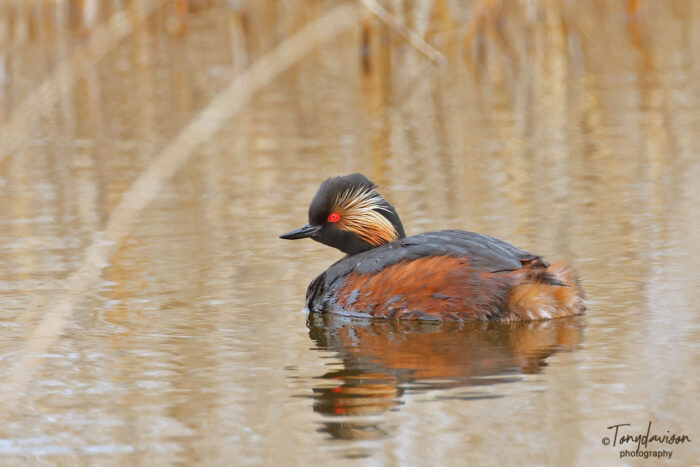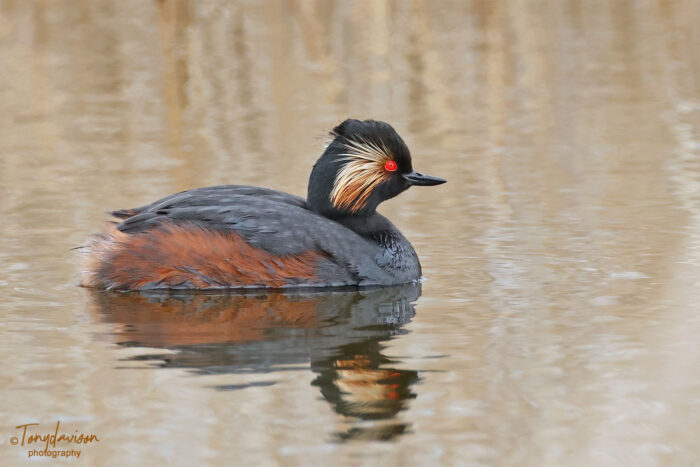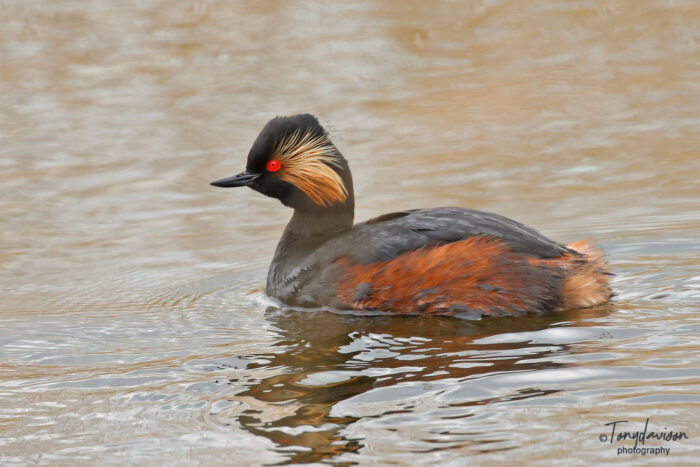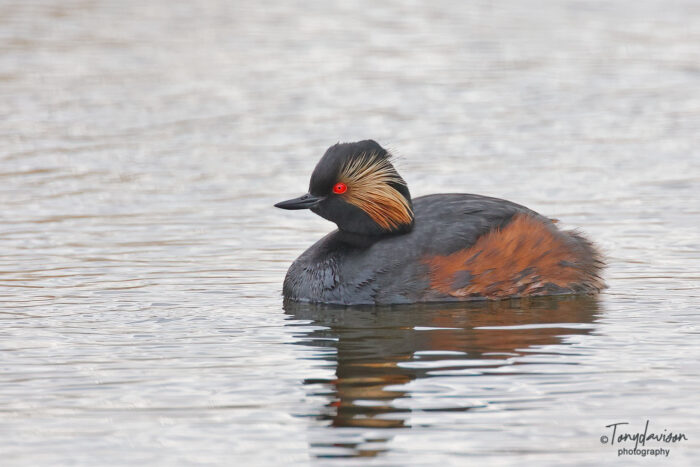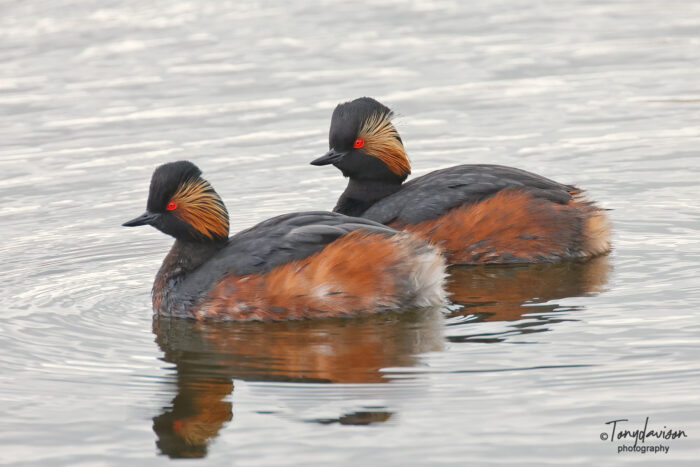The “Eared Grebe”, better known as the Black-necked Grebe, is a rare breeding bird in Britain. It is more often seen in winter, visiting our reservoirs or observed at southern coastal sites, sometimes in good numbers. The birds begin to arrive back at their preferred breeding sites in late March and into April, when they are in full refinery, displaying their beautiful golden “ear” crests, which gives them their old name of “Eared Grebe”.
St.Aidan’s was once an old opencast coal mining area that was flooded in 1988. The RSPB have created a 400 acre nature reserve near Leeds, protecting ideal habitat for a variety of water bird species, including Bittern, Bearded Tit and the rare Black-necked Grebe. Footpaths meander throughout the reserve and if you are lucky, good views can be obtained of the grebes without any unnecessary disturbance. Sometimes a Bittern will fly across the reed beds, but they are most often heard.
On my recent visit I had 7 Eared Grebes, also booming Bittern, Little Owl, a calling Mediterranean Gull and a good selection of common waterfowl and waders. Lots of Sand Martin had arrived and a single Little-ringed Plover.
